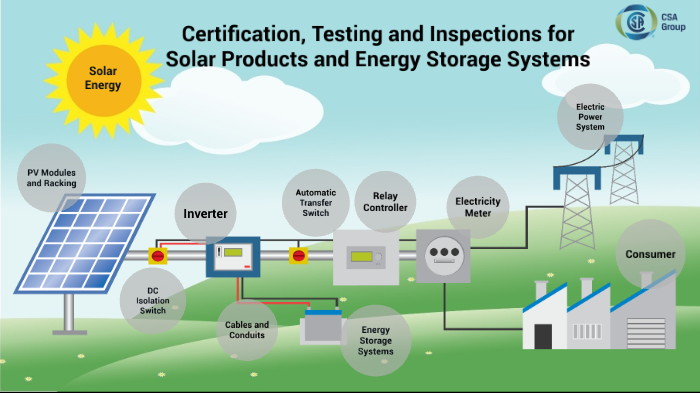CSA Group, a testing and certification services company, opened a Distributed Energy Resource laboratory in Independence, Ohio that will provide testing solutions to the U.S. energy storage, electric vehicle, EV charging infrastructure and microgrid technology markets.
The Ohio facility features a 40,000 square foot technology lab staffed by CSA experts providing solutions that include electrical safety evaluation, megawatt scale fire testing, environmental simulations, energy efficiency verification, performance testing, cybersecurity and grid interoperability evaluation solutions.
“With more industries seeking to decarbonize, the demand for energy storage and microgrid products continues to increase, and so does the need for testing, evaluation and certification services to help manufacturers demonstrate the safety, efficiency and performance of these products,” said David Weinstein, CSA Group’s president and CEO.
The testing solutions group’s DER laboratory expands CSA Group’s existing energy storage solutions in the North America, Europe and Chinese markets. Formed in 1969, CSA Group provides testing and standardization solutions to the power generation sector developed and followed by UL, IEC, ANSI, SCC and UN regulations.
Energy Storage System (ESS) standards CSA Group covers include:
1) ANSI/CAN/UL-1973 – Standard for Batteries for Use in Stationary, Vehicle Auxiliary Power and Light Electric Rail (LER) Applications
This bi-national safety standard covers cells, modules, and battery systems used in stationary applications. It includes specific safety criteria for well-known battery chemistries as well as construction and testing criteria. The standard is typically used in product testing and certification for storage battery evaluation in North America.
2) UL/CAN 9540 – Standard for Energy Storage Systems and Equipment
This bi-national standard applies broad requirements for all types of ESS, including stationary ESS connected to the power grid. It also sets standards for specific functional safety measures, including safety analysis and safety-related electrical and electronic controls. Electrical, mechanical, and environmental tests are included, as well as measures to evaluate inherent system design and performance, and how the system interfaces with infrastructure.
3) UL 9540A – Test Method for Evaluating Thermal Runaway Fire Propagation in Battery Energy Storage Systems
UL 9540A offers a test method for evaluating thermal runaway propagation in battery ESS. Referenced in the draft National Fire Protection Association (NFPA) 855 standard, it aims to provide quantitative data to characterize potential fire events in ESS. Testing is to be done at the cell, module, unit, and possibly the installation level. UL is expecting to take this to the Standards Technical Panel (STP) process later this year, in order to begin to build industry consensus on the test procedure.
4) NFPA 855 – Standard for the Installation of Stationary Energy Storage Systems
NFPA 855, which is expected to be published in 2019, outlines the requirements for installing stationary ESS. It covers lead acid and Ni-Cd systems greater than 70 kWh, lithium-ion and sodium systems greater than 20 kWh, and other systems greater than 10 kWh, all of which must be listed to UL 9540. The standard specifies minimum water fire suppression rates, or allows for alternate fire suppression if large scale testing is conducted. It also sets size and separation requirements.

Image: CSA Group
This content is protected by copyright and may not be reused. If you want to cooperate with us and would like to reuse some of our content, please contact: editors@pv-magazine.com.









By submitting this form you agree to pv magazine using your data for the purposes of publishing your comment.
Your personal data will only be disclosed or otherwise transmitted to third parties for the purposes of spam filtering or if this is necessary for technical maintenance of the website. Any other transfer to third parties will not take place unless this is justified on the basis of applicable data protection regulations or if pv magazine is legally obliged to do so.
You may revoke this consent at any time with effect for the future, in which case your personal data will be deleted immediately. Otherwise, your data will be deleted if pv magazine has processed your request or the purpose of data storage is fulfilled.
Further information on data privacy can be found in our Data Protection Policy.